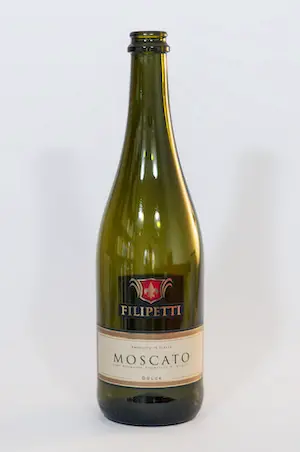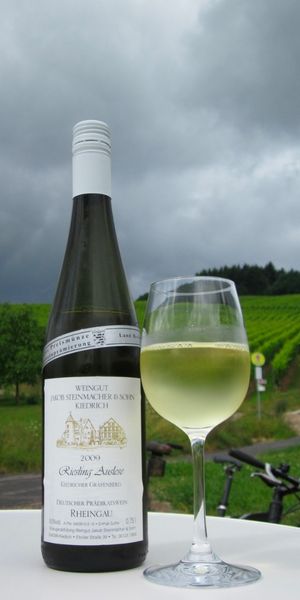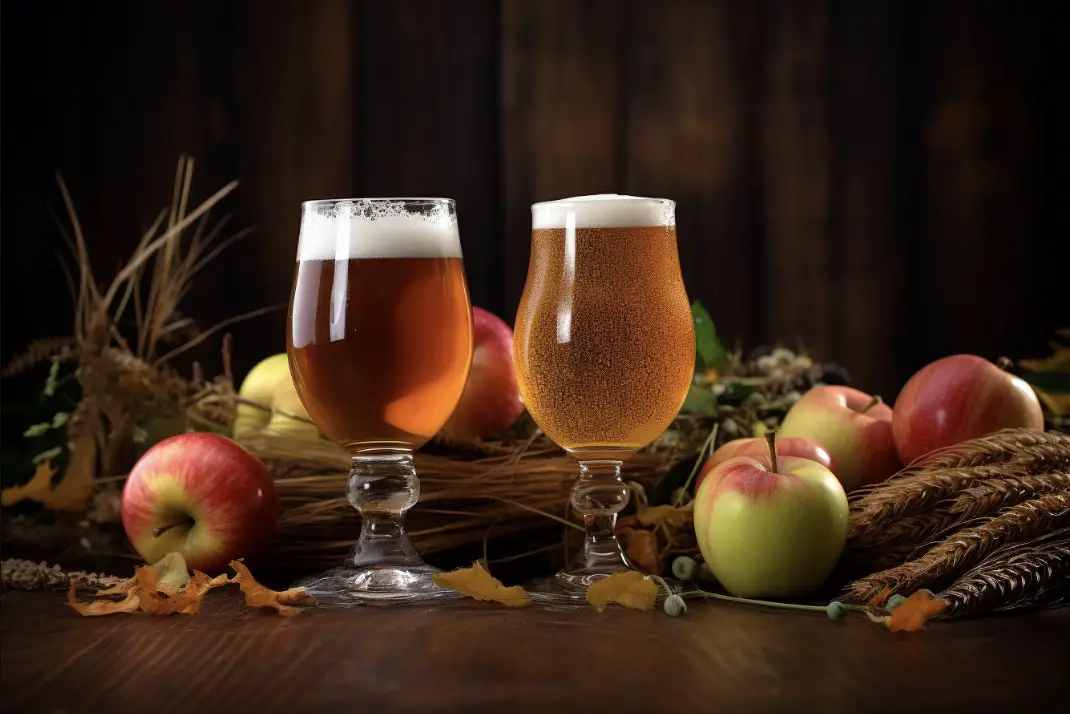A lot of people are intimidated by wine, thinking it’s too snooty or complicated. But it doesn’t have to be!
Choosing a good sweet white wine is not always trivial, as these are often associated with the cheaper, less acidic and full-bodied wines or those exclusively used for desserts.
As a general rule, wines grown in warmer climates will have more residual sugar and sweetness, but wines from colder regions, like the Riesling wines from Germany, have a high sugar content by virtue of the later ripening and freezing of wine.
Other white dessert wines like the Tokaji of Hungary or the Sauternes or Moscato or France and Italy are sweet due to the early termination of their brewing process by the addition of alcohol.
Wine is just fermented grape juice, and it’s been around for thousands of years. It’s definitely worth taking the time to learn about, because it can enhance your dining experience in a big way.
I have collected information on some of the most popular sweet white wines in the table below:
| Wine | Origin | Alcohol % | Avg. Vivino Score | Main Taste Characteristics | Suggested Food Pairings |
|---|---|---|---|---|---|
| Moscato | Italy | 5.5-8.5% | 4.1 | Sweet, fruity, floral | Fruit, dessert, cheese |
| Riesling | Germany | 8-14% | 4.0 | Sweet, floral, citrus | Spicy food, Asian cuisine, seafood |
| Gewürztraminer | Germany | 13-15% | 3.9 | Sweet, spicy, floral | Indian food, curries, charcuterie |
| Chenin Blanc | France | 9-14% | 3.8 | Sweet, honey, apple | Fried food, spicy food, Asian cuisine |
| Pinot Grigio | Italy | 10-13% | 3.7 | Sweet, citrus, honey | Salads, seafood, light pasta dishes |
| Viognier | France | 14-16% | 3.6 | Sweet, tropical fruit, floral | Rich seafood, spicy food, Asian cuisine |
| Chardonnay | France | 12-13% | 3.5 | Sweet, oak, butter | Poultry, pork, seafood |
| Sauvignon Blanc | France | 12-14% | 3.4 | Sweet, citrus, grassy | Salad, seafood, light pasta dishes |
| Moscato d’Asti | Italy | 5.5-6% | 3.3 | Sweet, fruity, sparkling | Dessert, fruit, cheese |
| White Zinfandel | USA | 9-11% | 3.2 | Sweet, strawberry, raspberry | BBQ, grilled food, spicy food |
| Prosecco | Italy | 11-12% | 3.1 | Sweet, citrus, sparkling | Appetizers, seafood, fruit |
| Sauternes | France | 13-14% | 3.0 | Sweet, honey, apricot | Dessert, fruit, cheese |
| Semillon | France | 11-14% | 2.9 | Sweet, honey, lemon | Seafood, poultry, salads |
| Torrontes | Argentina | 11-13% | 2.8 | Sweet, floral, tropical | Spicy food, Asian cuisine, seafood |
| Moscato Giallo | Italy | 8-10% | 2.7 | Sweet, peach, grapefruit | Dessert, fruit, cheese |
| Gavi | Italy | 11-13% | 2.6 | Sweet, melon, citrus | Seafood, salads, light pasta dishes |
| Vermentino | Italy | 11-13% | 2.5 | Sweet, apple, pear | Salads, seafood, light pasta dishes |
| Marsanne | France | 13-14% | 2.4 | Sweet, honey, peach | Poultry, pork, seafood |
| Roussanne | France | 13-15% | 2.3 | Sweet, pear, apricot | Rich seafood, spicy food, Asian cuisine |
| Muscat Blanc a Petits Grains | France | 10-13% | 2.2 | Sweet, grapey, floral | Dessert, fruit, cheese |
In this guide I will teach you the basics of choosing a good sweet white wine and give you some good suggestions to get you started!
What makes white wines sweet?
The weather has a big impact on the sweetness of grapes for white wine production. The amount of sugar in the grape affects the alcohol content and the sweetness of the wine.
Grapes grown in warm climates tend to have more sugar and produce sweeter wines. Grapes grown in cooler climates have less sugar and produce drier wines.
However, some wine producers fortify their wine with alcohol to kill the yeast before all the sugar has been fermented, leading to a high amount of residual sugars and sweetness. This is done for many desert-type wines like Tokajis and Barsacs.

Other sweet wines like Moscato and Riesling wines are made by letting the grapes ripen for longer or exploiting the frost to concentrate the sugars in the grape juice.
Finally, the Sauternes are made by pre-fermenting the grapes themselves into a much more concentrated sweet and thick juice that is then fermented till the yeast dies off by itself.
How to pair sweet white wines with food?
Pairing sweet white wines with food can be a challenging task, as the sweetness of the wine can often overpower the flavors of the dish.
However, with the right combination, sweet white wines can be the perfect complement to a variety of dishes.
One of the key things to consider when pairing sweet white wines with food is the level of sweetness in the wine.
Wines with a lower alcohol content, such as Moscato and Riesling, tend to be sweeter and more delicate, making them a good match for dishes with subtle flavors, such as fruit and cheese.
Wines with a higher alcohol content, such as Viognier and Chardonnay, tend to be richer and more robust, making them a better match for dishes with bolder flavors, such as spicy food and rich seafood.
Another important factor to consider when pairing sweet white wines with food is the main taste characteristics of the wine. Wines with fruity and floral flavors, such as Moscato and Gewürztraminer, are a good match for dishes with similar flavors, such as fruit and Asian cuisine.
Wines with citrus and honey flavors, such as Pinot Grigio and Chenin Blanc, are a good match for dishes with similar flavors, such as salads and seafood. Wines with oak and butter flavors, such as Chardonnay and Sauvignon Blanc, are a good match for dishes with similar flavors, such as poultry and pork.

When pairing sweet white wines with food, it is also important to consider the overall sweetness of the dish. Dishes that are sweet, such as dessert and fruit, are a good match for sweet white wines, as they can balance out the sweetness and add complexity to the dish.
Dishes that are savory, such as spicy food and charcuterie, are also a good match for sweet white wines, as the sweetness can help to cut through the richness and add depth to the dish.
In conclusion, pairing sweet white wines with food can be a rewarding experience, as the right combination can enhance the flavors of both the wine and the dish.
By considering the level of sweetness, the main taste characteristics, and the overall sweetness of the dish, it is possible to create delicious and harmonious pairings that will impress even the most discerning palate.
How to choose a good sweet white wine?
When it comes to choosing a sweet wine, acidity is a key factor. You may say that acidity is the opposite of sweetness and it keeps the wine from feeling cloying on the palate and unlocks its potential for aging.
Winemakers can achieve this balance through various production techniques. They also often rely on the specific climatic conditions of their regions.
There are many different types of sweet white wines, from light and refreshing to rich and decadent. The type you choose should depend on your personal preferences and what you’ll be eating it with. Some common varieties include Riesling, Moscato, and Chenin Blanc.

When shopping for sweet white wines, pay attention to the label. It should give you some indication of the wine’s sweetness level. Most wines are classified as “dry,” “off-dry,” or “sweet.”
Dry wines have little to no residual sugar, while off-dry wines have a slight sweetness. Sweet wines have more noticeable sweetness, but they can also have higher alcohol content.
If you’re not sure where to start, ask the staff at your local wine shop for recommendations. They should be able to help you find a few options that will suit your taste buds and budget.
And don’t be afraid to experiment – with so many different types of sweet white wines out there, you’re bound to find one that you love!
Sauternes
If you are looking for a sweet, full-bodied wine to drink with dessert, consider trying Sauternes.
This French wine is made from grapes like Semillon, Sauvignon Blanc, and Muscadelle and is characterized by deep golden hues.
Sauternes are sweet due to the high starting concentration of sugars in the grape juice due to a special preprocessing of the grapes.
This extra sugar comes from the partial fermentation and drying of the grapes caused by adding the Botrytis cinerea fungus that normally causes rot in fruits.
While it is often thought of as dessert wine, it is also a delicious pairing for rich and spicy foods.
Barsac
Barsac is a very sweet white wine from France that is often served with dessert.
Its silty soil produces wines with fruity aromas and flavors. Barsac wines are light in weight and tend to have more acidity than their Sauternes counterparts.
They can also have flavors of honey, peach, pineapple, and almond. They are best served slightly chilled.
Moscato
Moscato is a sweet white wine that is made in Italy. It’s characterized by its fruity notes and is a great match for a variety of desserts.

Some of the foods it pairs well with include citrus fruits, peaches, nectarine tarts, and warm berry pies. It also pairs well with chocolate and nutty desserts.
Beaumes-de-Venise
Beaumes-de-Venise wine is sweet, ripe and medium bodied with high alcohol content.
It has aromatic notes of fruit, leather and spice. This wine has a high concentration of Grenache grapes, which make up at least 50% of the blend.
Other regional grapes such as syrah and Counoise are allowed, but they should not make up more than 25% of the blend.
Tokaji
Tokaji is a sweet white wine that originated in Hungary. This semi-sweet wine is made from a variety of grapes, including Furmint and harslevelu. They are native to Hungary and make up more than 90 percent of the vines in Tokaj.

This variety is known for its low acidity and ability to accumulate sugar and aromatic compounds. This type of grape is often blended with other types of grapes to create a unique flavor.
White Port wines
White port wines are very sweet because of the high level of sugar in them. This is because they are made from grapes that are very ripe and have a lot of natural sweetness.
Some examples of good white port wines include:
- Taylor’s Chip Dry
- Quinta da Pedra Alta No 3
- Churchill’s Dry White Port
Typically, it goes well with foie gras, cheesecake, roasted almonds, fruit, and ham. It is also a good choice for a dessert wine. White Port is often aged, which is why it pairs better with aged foods.
Riesling
Riesling is a white wine from Germany that is often known as being sweet.
Its sweet character is derived from the grape’s natural ability to resist cold climates and ripen later than many other varieties. In addition, the sugars are concentrated in a process called ice distillation – similar to the way applejack or ice cider is made!
Riesling wines are made from the Riesling grape, which is a white grape. The Riesling grape is known for its high sugar content, which makes it ideal for making sweet wines.

Riesling wines are usually made using the traditional method of fermentation, where the grape juice is left in contact with the skins for a period of time before being pressed.
This allows the sugar in the grape juice to convert into alcohol, which gives the wine its sweetness and aroma.
Hard cider as a great alternative to sweet white wines
Hard ciders are a great alternative to sweet white wines for food pairings, as they offer a similar level of sweetness and refreshment, but with a more complex and nuanced flavor profile.
One of the key differences between sweet white wines and hard ciders is the source of the sweetness. While sweet white wines are made from fermented grapes, hard ciders are made from fermented apples, which gives them a distinctive apple flavor and aroma.
This apple flavor can be sweet and fruity, like Moscato, or spicy and floral, like Gewürztraminer, depending on what cider apples are used.
Another difference between sweet white wines and hard ciders is the level of carbonation. Most sweet white wines are still, while most hard ciders are sparkling, which gives them a refreshing and lively mouthfeel.
This sparkling quality can be similar to Moscato d’Asti or Prosecco, making hard ciders a great match for appetizers and light meals.
When it comes to food pairings, hard ciders can be a great alternative to sweet white wines. For example, a sweet and fruity hard cider, like Moscato, can be a great match for dessert and fruit, while a spicy and floral hard cider, like Gewürztraminer, can be a great match for spicy food and charcuterie.
A sparkling hard cider, like Prosecco, can also be a great match for seafood and salads, adding a lively and refreshing element to the dish.
Overall, hard ciders are a versatile and delicious alternative to sweet white wines, offering a unique and satisfying flavor profile that can complement a wide range of dishes.
By choosing the right hard cider and pairing it with the right food, it is possible to create delicious and harmonious combinations that will satisfy even the most discerning palate.
Conclusion
In conclusion, there are many different types of sweet white wines available to suit your personal taste. Some common varieties include Riesling, Moscato, and Chenin Blanc. When shopping for sweet white wines, pay attention to the label.
It should give you some indication of the wine’s sweetness level. Most wines are classified as “dry,” “off-dry,” or “sweet.”
And don’t be afraid to experiment – with so many different types of sweet white wines out there, you’re bound to find one that you love!




